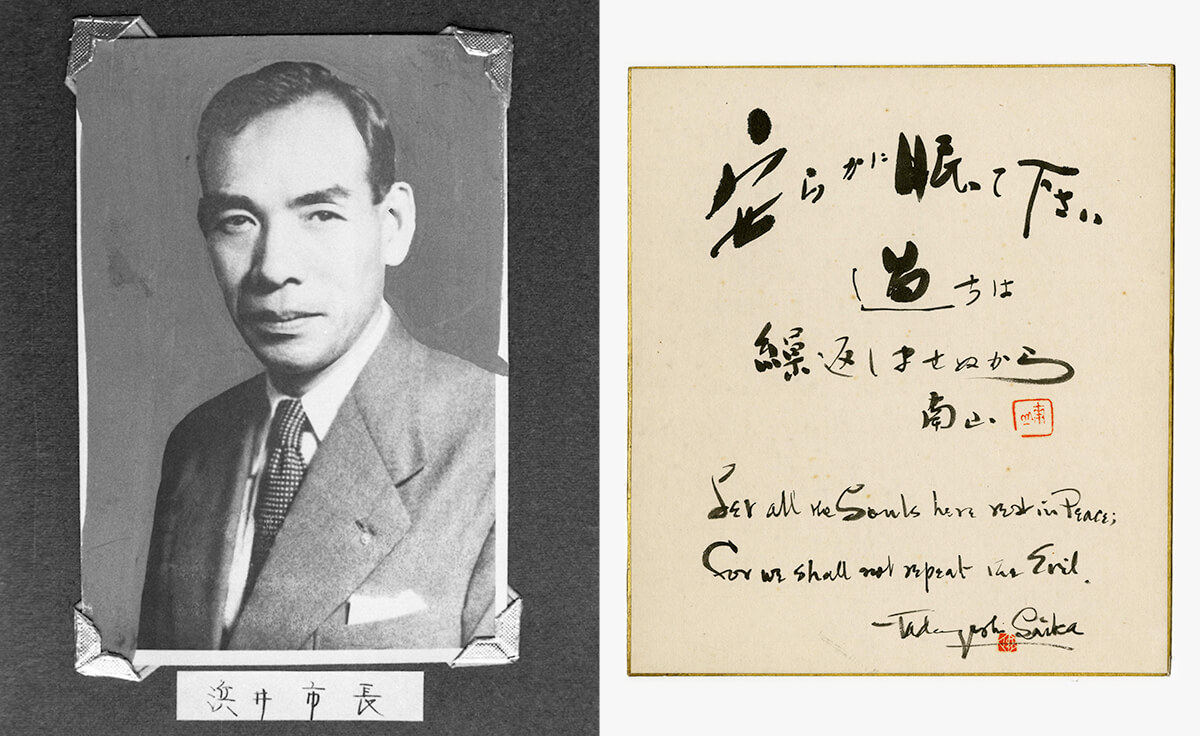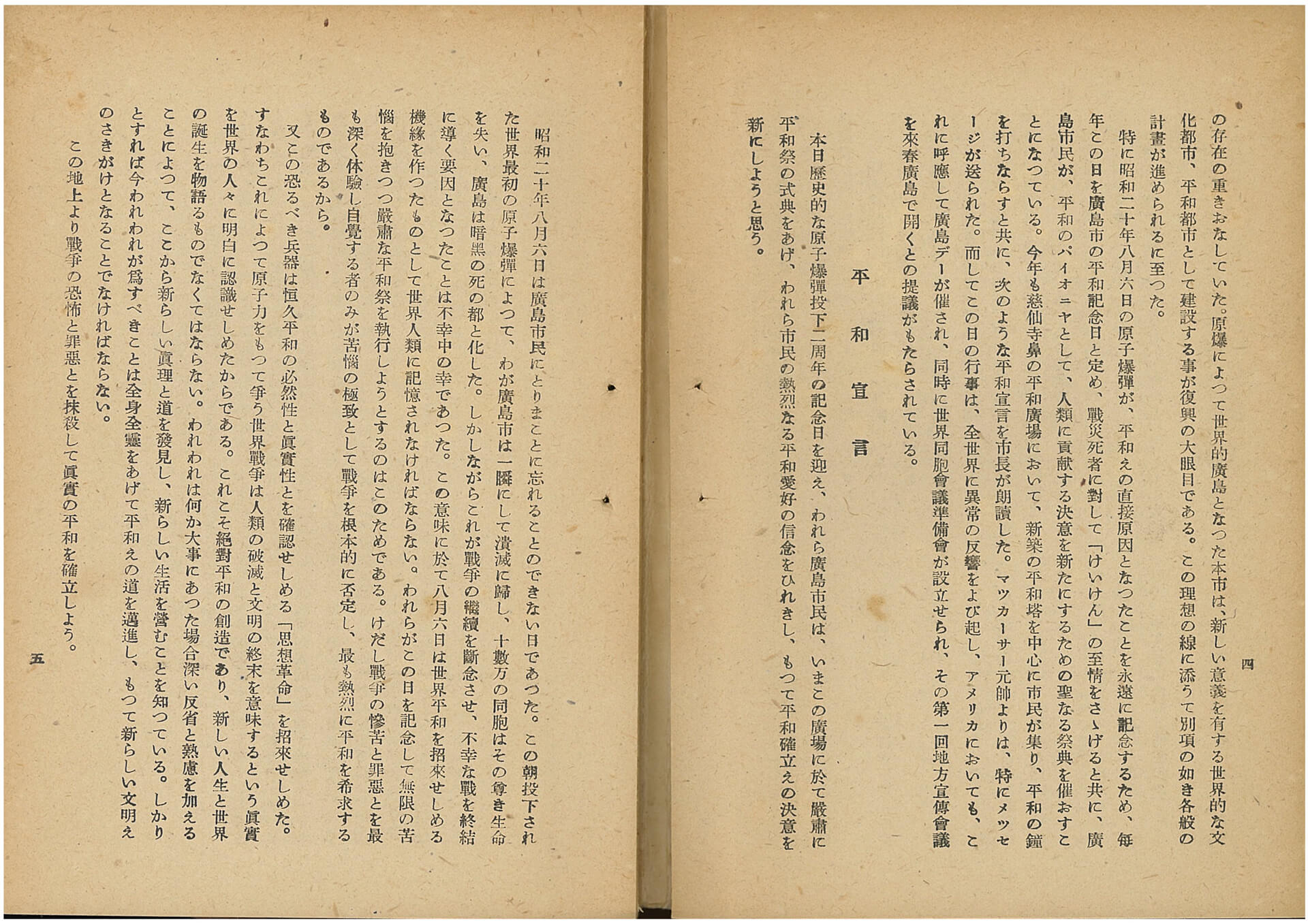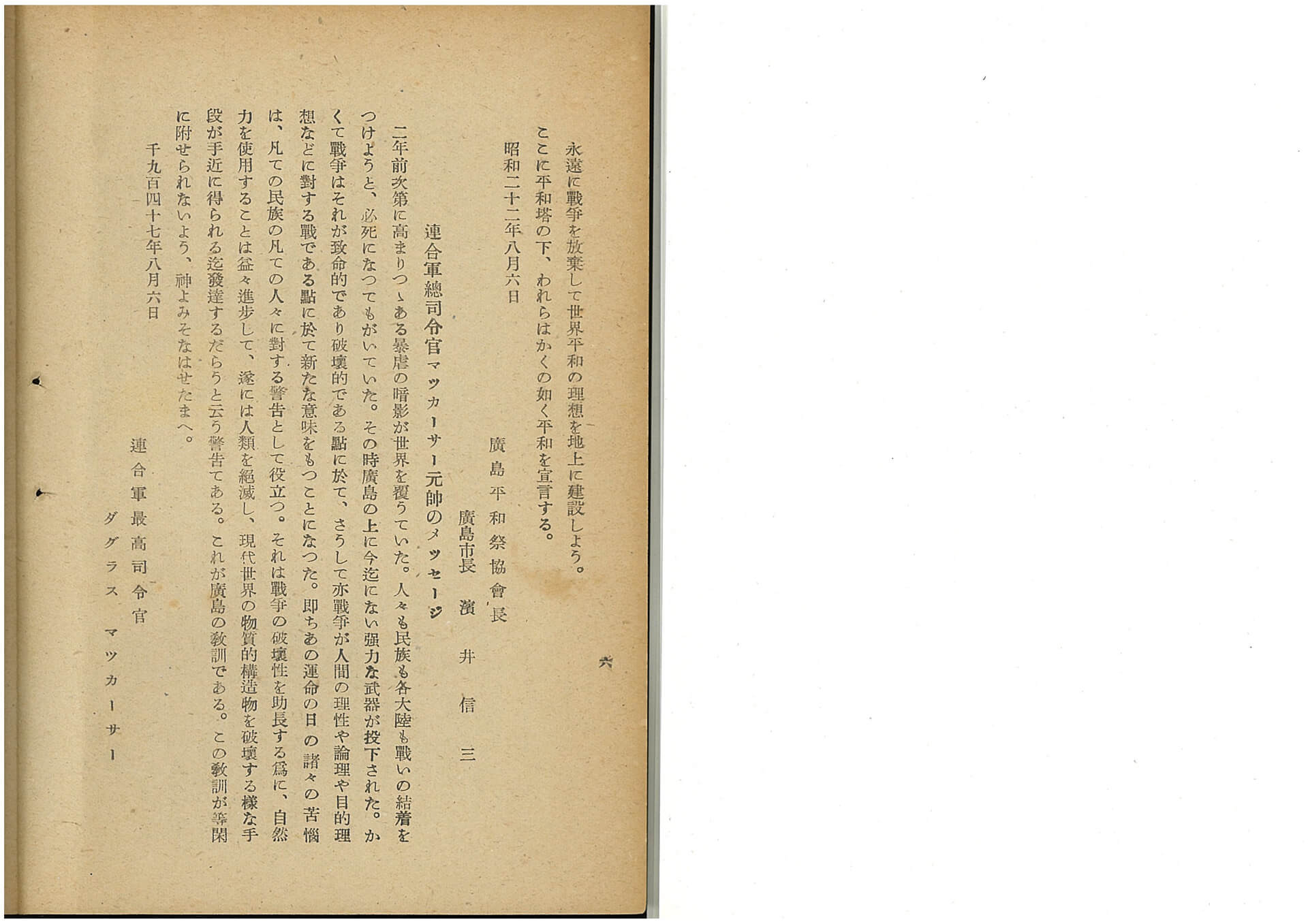LEARN バーチャルワークショップのための学び Learn for the Virtual Workshops
復興を辿った『HIROSHIMA』の過程を振り返り、
せかいの人々と未来のビジョンを描きます。
Look back on the progress of HIROSHIMAʼs revival and
draw a vision of the future with the people of the world.
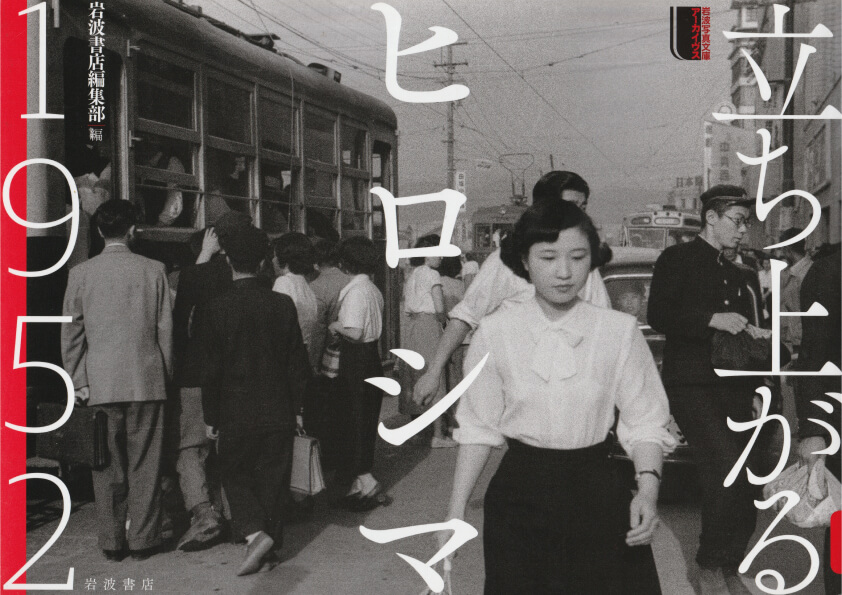
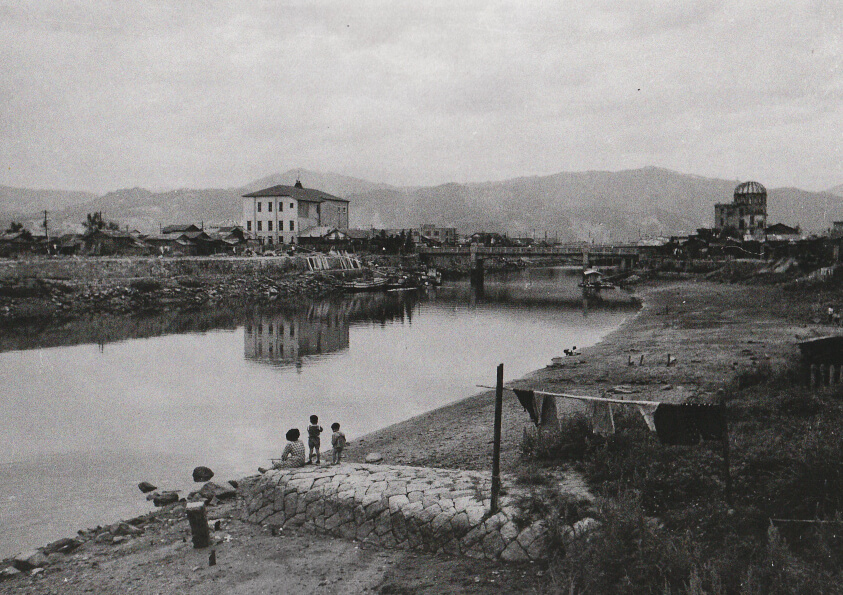
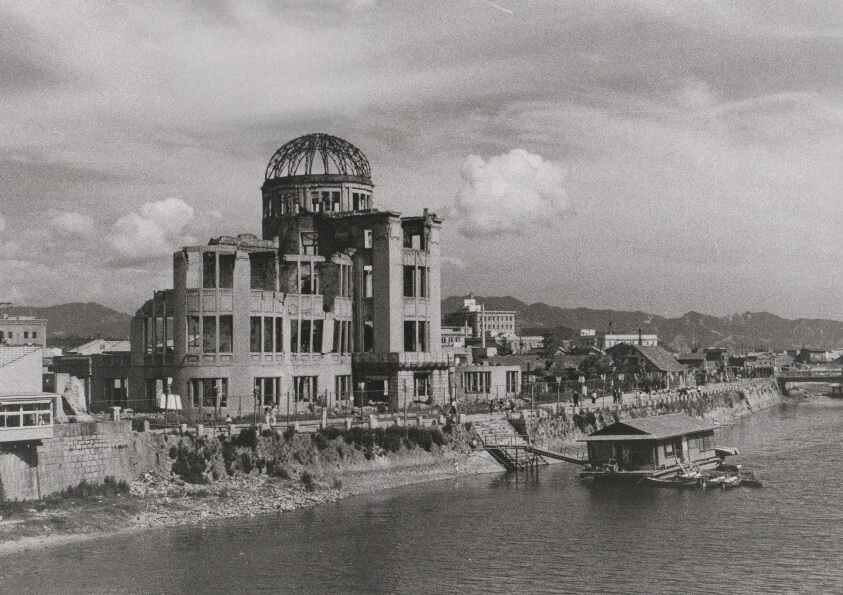
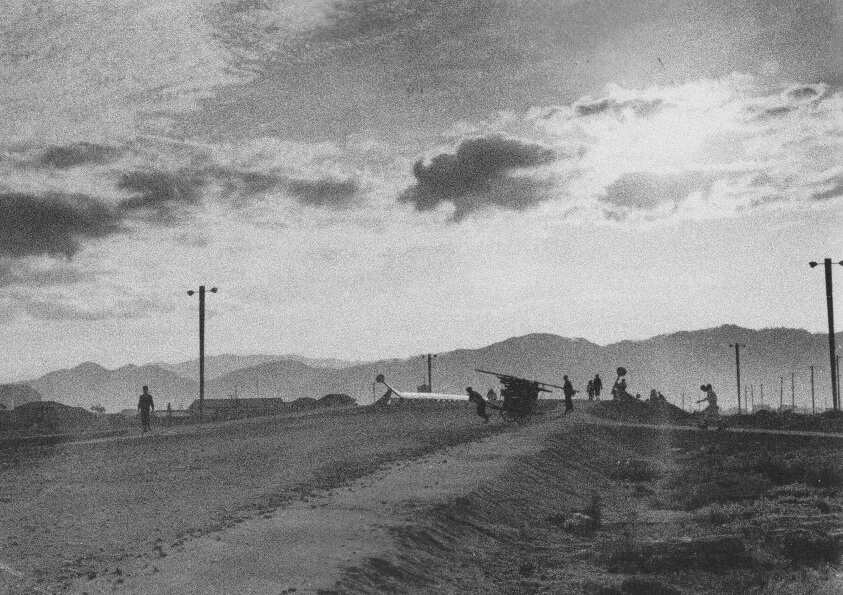
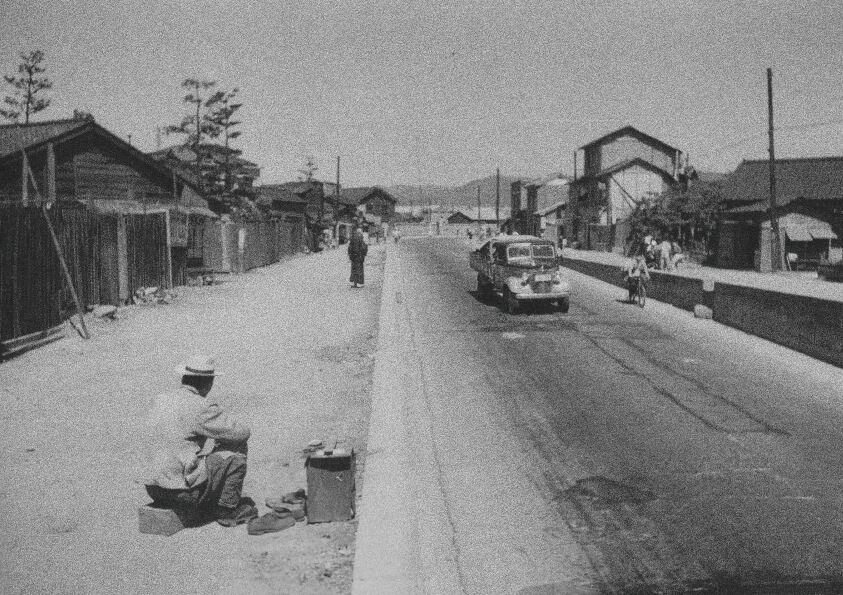
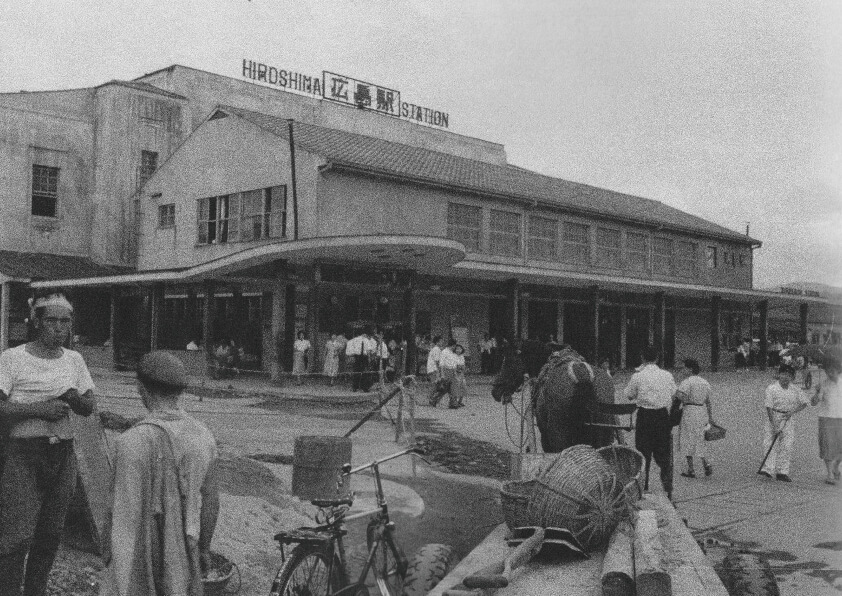
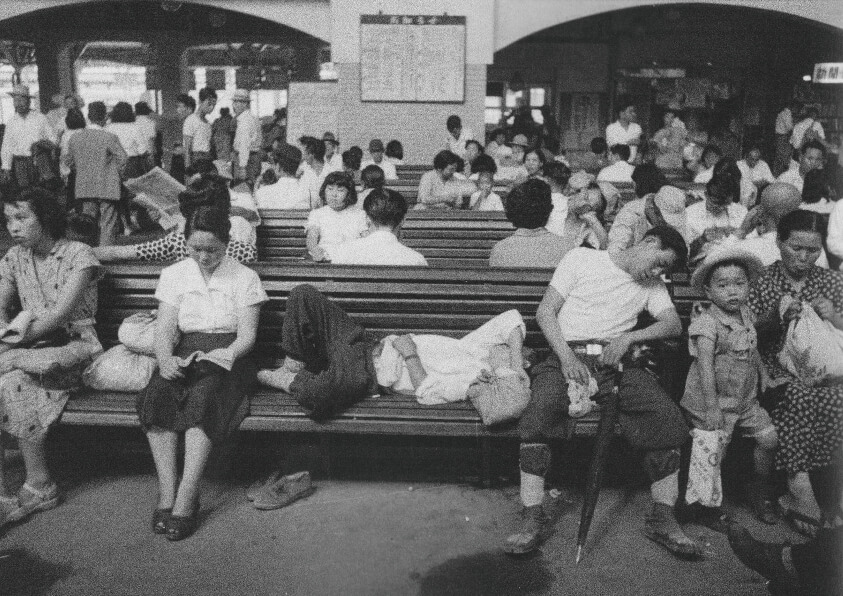
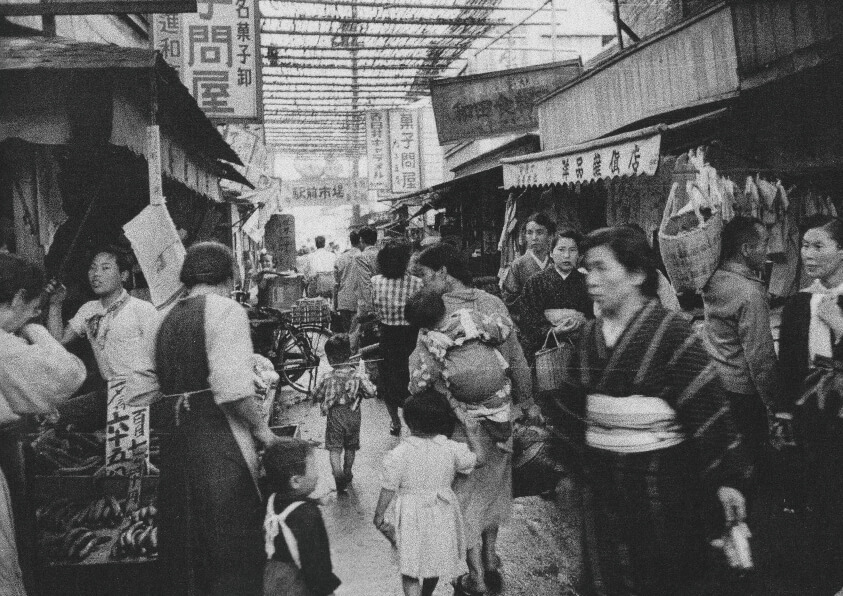
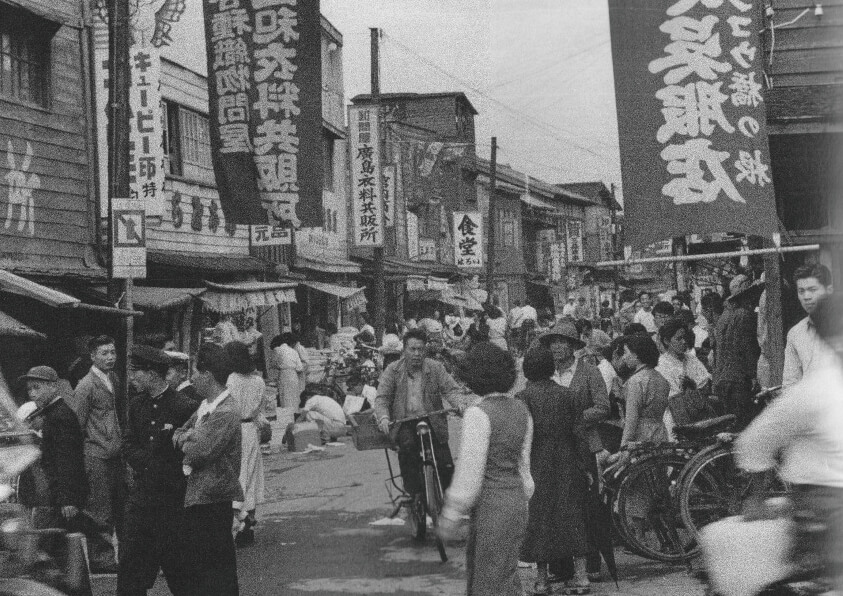
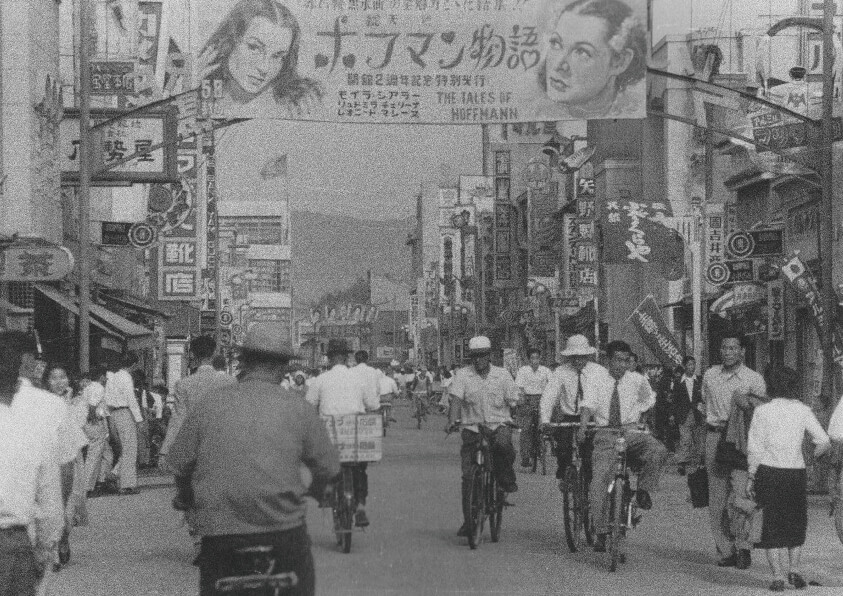
「立ち上がるヒロシマ 1952」 出典/岩波写真文庫アーカイヴス
Tachiagaru Hiroshima 1952 (Rising Hiroshima, 1952) / Source: Iwanami Shashin Bunko Archives
1) HIROSHIMAを学ぶ
現在も広島平和記念公園にある慰霊碑、
また、これまで毎年8月6日に広島市長によって読み上げられてきている「平和宣言」の第一回目の内容は、
HIROSHIMA復興の原点のひとつです。
そしてHIROSHIMAが現在まで辿って来た軌跡もまた、
”原爆から75年間は草木も生えない”といわれてきたその75年目を通過する私たちにとり、
心に刻むべき事ではないでしょうか。
「Promise to Yourself」をはじめワークショップご参加の前に、ぜひ資料に触れてみてください。
1) Learn about HIROSHIMA
There remains a cenotaph in the Hiroshima Peace Memorial Park,
where the Mayor of Hiroshima reads out the Peace Declaration every year on August 6th.
The very first Peace Declaration reveals part of the beginning of HIROSHIMAʼs revival.
It was said that after the atomic bombing, nothing would grow in HIROSHIMA for 75 years.
As we pass through the 75th year since the atomic bombing,
we need to remember the path that HIROSHIMA has taken and what it means to us.
Before you make the Promise to Yourself and join the workshops, please take a moment to look at the material.
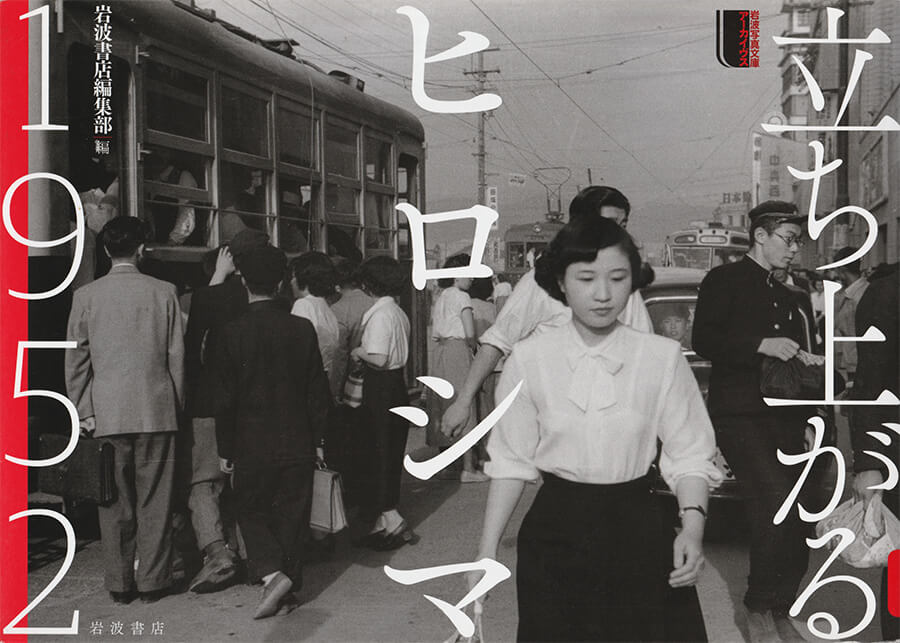
「立ち上がるヒロシマ 1952」
出典/岩波写真文庫アーカイヴス
一九五二年八月六日、原爆被害を特集した岩波写真文庫『広島―戦争と都市』が刊行されたが、名取洋之助と長野重一が撮った市内の情景は、ほとんど掲載されないまま、百余本のフィルムが残されました。建設中の平和記念資料館、原爆ドームとみやげ物屋、マーケットや繁華街の賑わいなど、眠っていた名写真の公開。
Tachiagaru Hiroshima 1952 (Rising Hiroshima, 1952)
Source: Iwanami Shashin Bunko Archives
On August 6, 1952, Iwanami Shashin Bunko published Hiroshima - Senso to Toshi (Hiroshima - War and the City), about the destruction caused by the atomic bomb. However, most of the photos taken by and Yonosuke Natori Shigeichi Nagano were not featured, leaving more than 100 rolls of film unused. The formerly unpublished portraits include scenes of the Peace Memorial Museum under construction, the A-Bomb Dome, souvenir shops, and activity in the markets and downtown area.
「慰霊碑碑文考案者による自筆の色紙」と「第一回平和宣言」
出典/広島市公文書館所蔵
Original writing by the professor who conceived the inscription on the Cenotaph for the A-bomb Victims and the first Hiroshima Peace Declaration
Source: Hiroshima City Archives
Peace Declaration (1947)
Today, on this second anniversary of the atomic bombing of Hiroshima, we, Hiroshima's citizens, renew our commitment to the establishment of peace by celebrating a Peace Festival at this site, and expressing our burning desire for peace.
The citizens of Hiroshima will never be able to forget August 6, 1945. On that morning, exactly two years ago today, the first atomic bomb to be unleashed on a city in the history of mankind fell on Hiroshima; it instantly reduced the city to ashes and claimed the precious lives of more than 100,000 of our fellow citizens. Hiroshima turned into a city of death and darkness. Yet as some slight consolation for this horror, the dropping of the atomic bomb became a factor in ending the war and calling a halt to the fighting. In this sense, mankind must remember that August 6 was a day that brought a chance for world peace. This is the reason why we are now commemorating that day by solemnly inaugurating a festival of peace, despite the limitless sorrow in our minds. For only those who most bitterly experienced and came to know most completely the misery and the guilt of war can utterly reject war as the most terrible kind of human suffering, and ardently pursue peace.
This horrible weapon brought about a "Revolution of Thought," which has convinced us of the necessity and the value of eternal peace. That is to say, because of this atomic bomb, the people of the world have become aware that a global war in which atomic energy would be used would lead to the end of our civilization and extinction of mankind.
This revolution in thinking ought to be the basis for an absolute peace, and imply the birth of new life and a new world. We know that, when in a crisis discover a new truth and a new path from the crisis itself, by reflecting deeply and beginning afresh. If this is true, what we have to do at this moment is to strive with all our might towards peace, becoming forerunners of a new civilization. Let us join to sweep away from this earth the horror of war, and to build a true peace. Let us join in renouncing war eternally, and building a plan for world peace on this earth.
Here, under this peace tower, we thus make a declaration of peace.
August 6, 1947
Shinzo Hamai
President of Hiroshima Peace Festival Association
Mayor of Hiroshima City
「ヒロシマ復興からのメッセージ」
出典/JICA中国
戦後復興における地方行政の役割、取り組みについて、広島県・市の経験や知見を紹介します。中でも、1.復興の理念の形成と共有、2.市長のリーダシップと行政官の信念、3.復興の各段階に応じた切れ目のない移行、4.国・県・市の協働、5.住民と行政との協働というポイントに着目しています。
A Message from the Reconstruction of HIROSHIMA
Source: JICA Chugoku
An introduction of Hiroshima Prefecture and City’s experiences and knowledge regarding the roles and efforts of local governments in postwar reconstruction with a focus on 1) forming and sharing principles regarding reconstruction, 2) the mayor’s leadership and conviction of administrative officers, 3) smooth transition adapting to each stage of reconstruction, 4) collaboration between national, prefectural, and municipal government, and 5) collaboration between residents and the government.
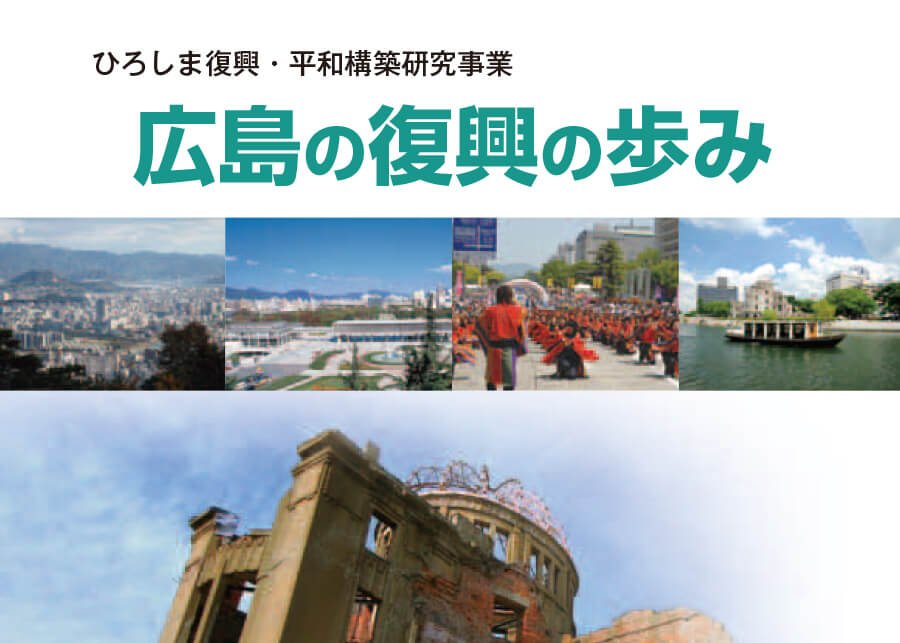
「広島の復興の歩み」
出典/広島県
原子爆弾で破壊された広島の復興のプロセスを社会の各分野(都市計画,産業経済,保健・医療など)にわたって調査・研究し、取りまとめたものを紹介します。近代史における広島の歩みを概観し,次いで戦争の時代と原子爆弾の投下,そして廃墟からの再出発,復興に至る軌跡をたどります。
Hiroshima’s Path to Reconstruction
Source: Hiroshima Prefecture
A compilation of surveys and research on the reconstruction process after the destruction of Hiroshima by the atomic bomb in social areas including city planning, industry/economy, and health/medical care, among other fields, with an overview of Hiroshima’s footsteps through modern history, followed by wartime and the dropping of the atomic bombing, starting over from ruins, and the path to reconstruction.
2) SDGsを学ぶ
2015年9月25日の国連総会で持続可能な開発目標(Sustainable Development Goals/ SDGs)が採択されました。
これからの世界を結びつける共通の目標として、ぜひ学んでみてください。
2) Learn about SDGs
Sustainable Development Goals (SDGs) were adopted by the United Nations General Assembly on September 25, 2015.
Learn about them as a common goal connecting the world from now on.
持続可能な開発目標(SDGs)について
出典/広島県 https://hiroshimaforpeace.com/sdgs-and-peace/about-sdgs/
SDGsとは,Sustainable Development Goals の略称で,持続可能な開発目標を指します。2030年までに持続可能な社会をつくるために,私たちの世界が直面する喫緊の環境,政治,経済の課題に対して発展途上国と先進国がともに取り組む普遍的目標です。この持続可能な開発目標(SDGs)は17のゴールと169のターゲットから構成されており,地球上の「誰一人取り残さない(leave no one behind)」ことを誓っています。SDGsは,人間の尊厳を奪う貧困へのグローバルな取り組みとして2000年にスタートしたミレニアム開発目標(MDGs)の後継となる目標です。MDGsの成功を土台としつつ,気候変動や経済的不平等,イノベーション,持続可能な消費,平和と正義などの新たな分野を優先課題として盛り込んでいます。ある目標を達成するためには,むしろ別の目標と広く関連づけられる問題にも取り組まねばならないことが多いという点で,目標はすべて相互持続的といえます。
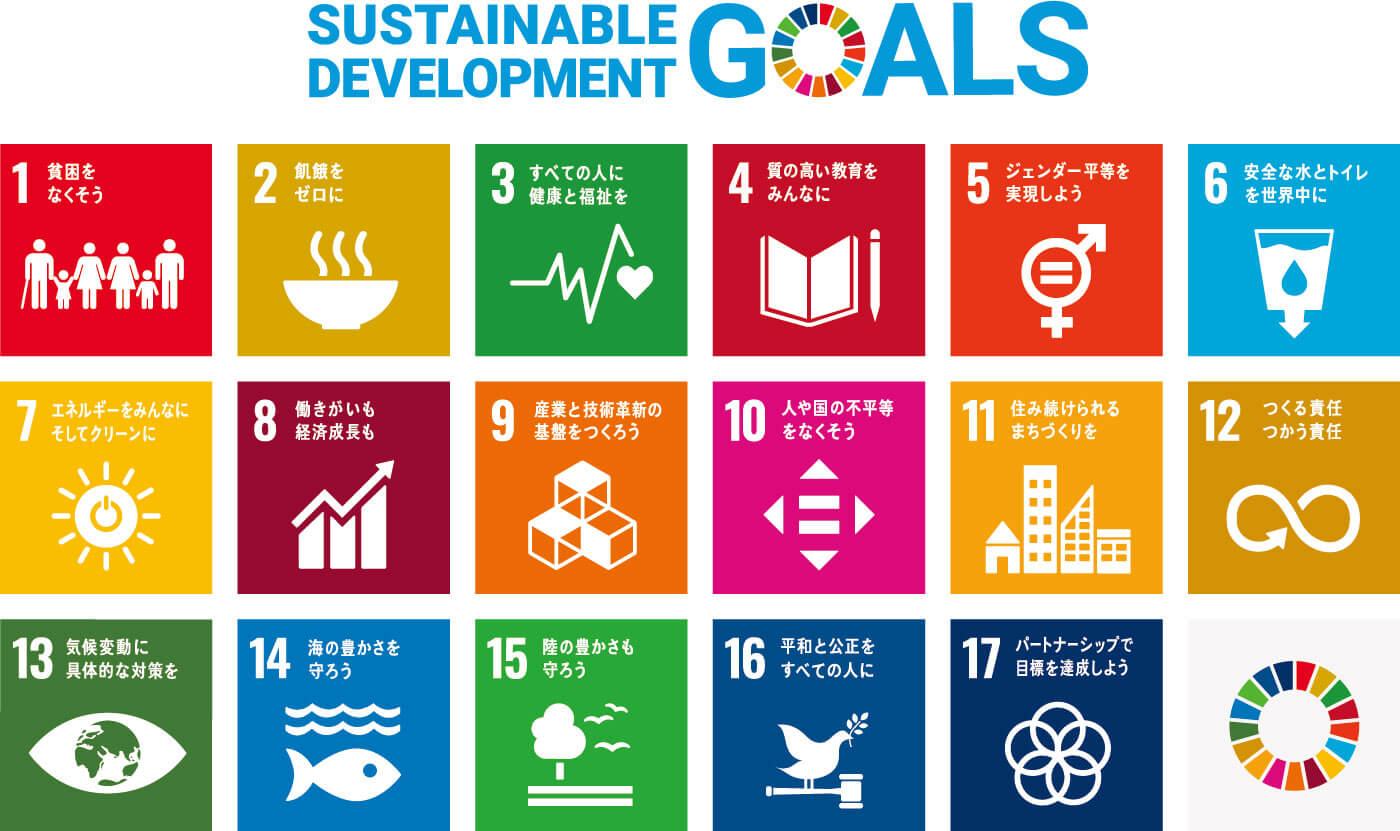
SDGsの17のゴールって何?
①貧困をなくそう , ②飢餓をゼロに , ③すべての人に健康と福祉を , ④質の高い教育をみんなに , ⑤ジェンダー平等を実現しよう , ⑥安全な水とトイレを世界中に , ⑦エネルギーをみんなにそしてクリーンに , ⑧働きがいも経済成長も , ⑨産業と技術革新の基盤をつくろう , ⑩人や国の不平等をなくそう , ⑪住み続けられるまちづくりを, ⑫つくる責任つかう責任 , ⑬気候変動に具体的な対策を , ⑭海の豊かさを守ろう , ⑮陸の豊かさを守ろう , ⑯平和と公正をすべての人に , ⑰パートナーシップで目標を達成しよう
About Sustainable Development Goals (SDGs)
Source: Hiroshima Prefecture https://hiroshimaforpeace.com/en/sdgs-and-peace/about-sdgs/
The Sustainable Development Goals (SDGs) are a universal goals that every countries take action to end poverty, protect the planet and improve the lives and prospects of everyone, everywhere. SDGs are composed of 17 Goals and 169 Targets and the pledge to leave no one behind.
The SDGs replace the Millennium Development Goals (MDGs) which started a global effort in 2000 to tackle the indignity of poverty. Building on the success and momentum of the MDGs, the new goals cover more ground, with ambitions to address inequalities, economic growth, decent jobs, cities and human settlements, industrialization, oceans, ecosystems, energy, climate change, sustainable consumption and production, peace and justice.

What are 17 Goals of SDGs?
【Goal 1】: End poverty in all its forms everywhere 【Goal 2】: Zero hunger 【Goal 3】: Ensure healthy lives and promote well-being for all at all ages 【Goal 4】: Quality education 【Goal 5】: Achieve gender equality and empower all women and girls 【Goal 6】: Ensure access to water and sanitation for all 【Goal 7】: Ensure access to affordable, reliable, sustainable and modern energy 【Goal 8】: Promote inclusive and sustainable economic growth, employment and decent work for all 【Goal 9】: Build resilient infrastructure, promote sustainable industrialization and foster innovation 【Goal 10】: Reduce inequality within and among countries 【Goal 11】: Make cities inclusive, safe, resilient and sustainable 【Goal 12】: Ensure sustainable consumption and production patterns 【Goal 13】: Take urgent action to combat climate change and its impacts 【Goal 14】: Conserve and sustainably use the oceans, seas and marine resources 【Goal 15】: Sustainably manage forests, combat desertification, halt and reverse land degradation, halt biodiversity loss 【Goal 16】: Promote just, peaceful and inclusive societies 【Goal 17】: Revitalize the global partnership for sustainable development

